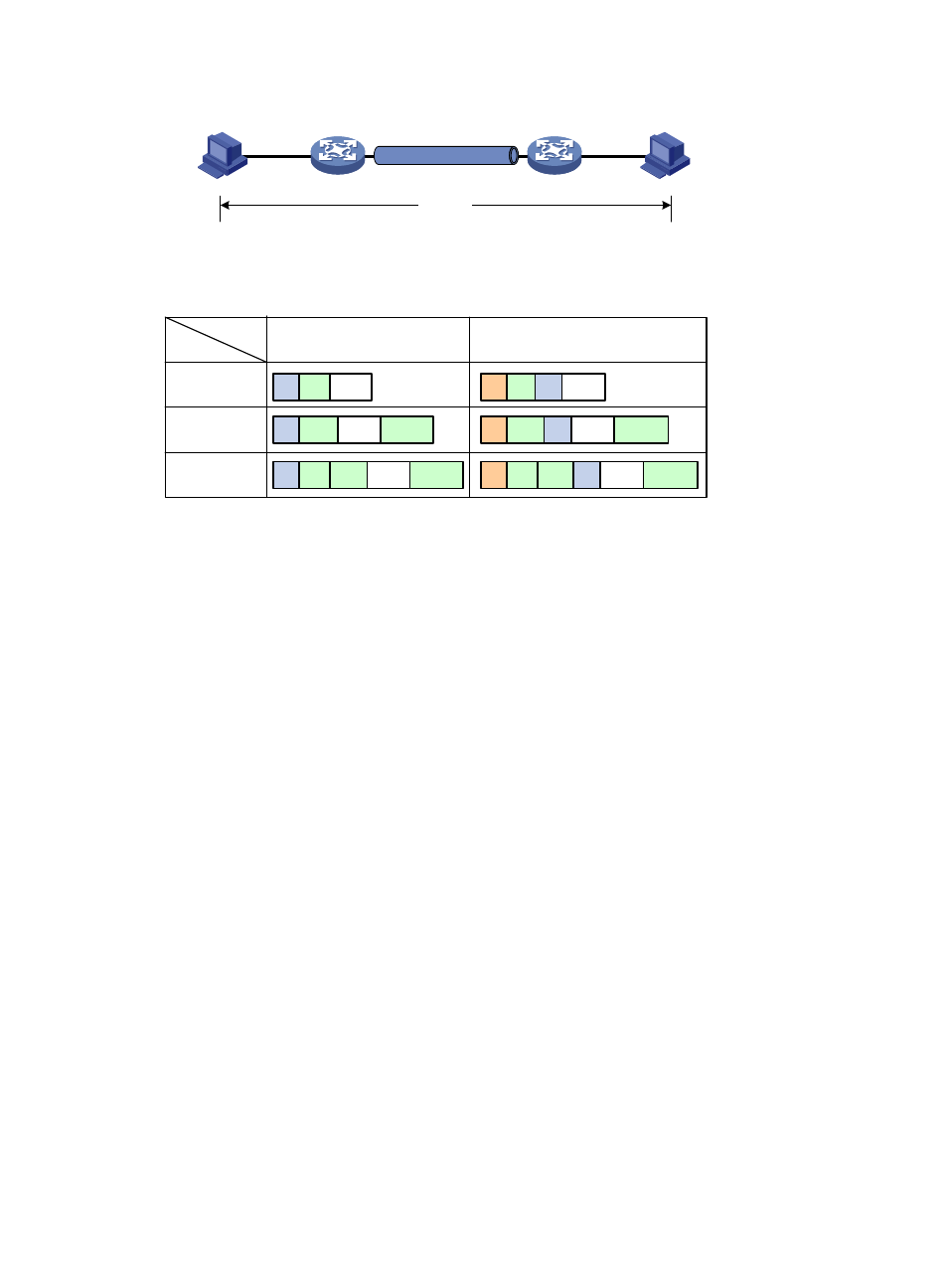Security association, Figure 76, Figure 75 – H3C Technologies H3C S6300 Series Switches User Manual
Page 234

219
Figure 75 IPsec protection in tunnel mode
shows how the security protocols encapsulate an IP packet in different encapsulation modes.
Figure 76 Security protocol encapsulations in different modes
Security association
A security association (SA) is an agreement negotiated between two communicating parties called
"IPsec peers." An SA comprises the following parameters for data protection:
•
Security protocols (AH, ESP, or both).
•
Encapsulation mode (transport mode or tunnel mode).
•
Authentication algorithm (HMAC-MD5 or HMAC-SHA1).
•
Encryption algorithm (DES, 3DES, or AES).
•
Shared keys and their lifetimes.
An SA is unidirectional. At least two SAs are needed to protect data flows in a bidirectional
communication. If two peers want to use both AH and ESP to protect data flows between them, they
construct an independent SA for each protocol in each direction.
An SA is uniquely identified by a triplet, which consists of the security parameter index (SPI), destination
IP address, and security protocol identifier. An SPI is a 32-bit number that identifies an SA. It is transmitted
in the AH/ESP header.
An SA can be set up manually or through IKE.
•
Manual mode—Configure all parameters for the SA through commands. This configuration mode
is complex and does not support some advanced features (such as periodic key update), but it can
implement IPsec without IKE. This mode is mainly used in small and static networks or when the
number of IPsec peers in the network is small.
•
IKE negotiation mode—The peers negotiate and maintain the SA through IKE. This configuration
mode is simple and has good expansibility. In medium- and large-scale dynamic networks, H3C
recommends setting up SAs through IKE negotiations.
A manually configured SA never ages out. An IKE-created SA has a lifetime, which comes in two types:
•
Time-based lifetime—Defines how long the SA can be valid after it is created.
Host A
Host B
Gateway A
Gateway B
Data flow
IPsec tunnel
Mode
Protocol
Transport
Tunnel
AH
ESP
AH-ESP
ESP-T
IP
Data
ESP
AH
IP
ESP-T
IP
Data
ESP
IP
IP
Data
AH IP
IP
Data
AH
ESP-T
IP
Data
ESP
ESP-T
IP
Data
ESP
AH
